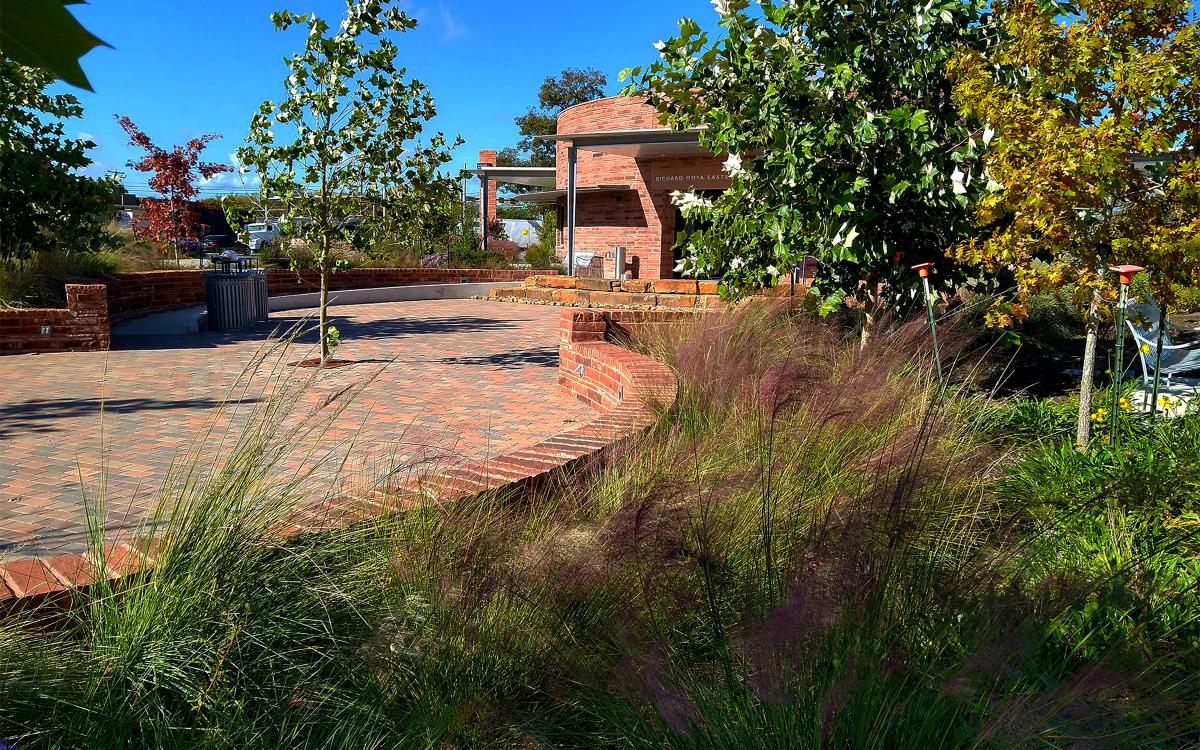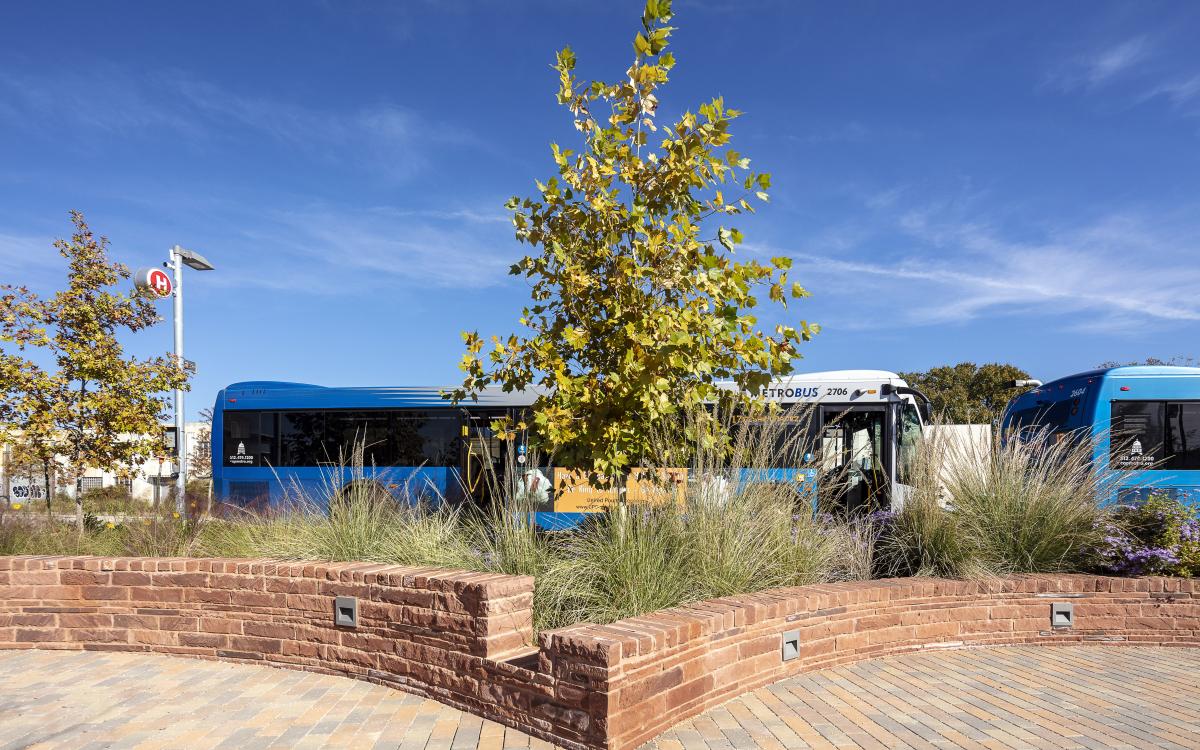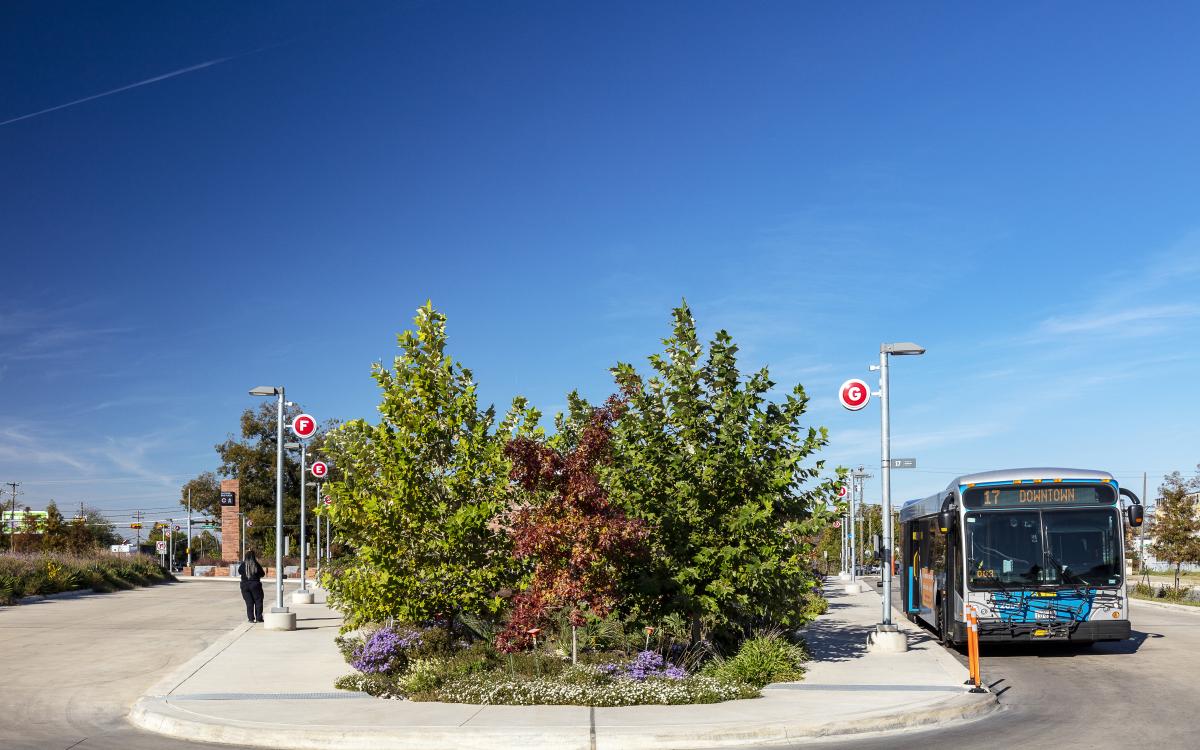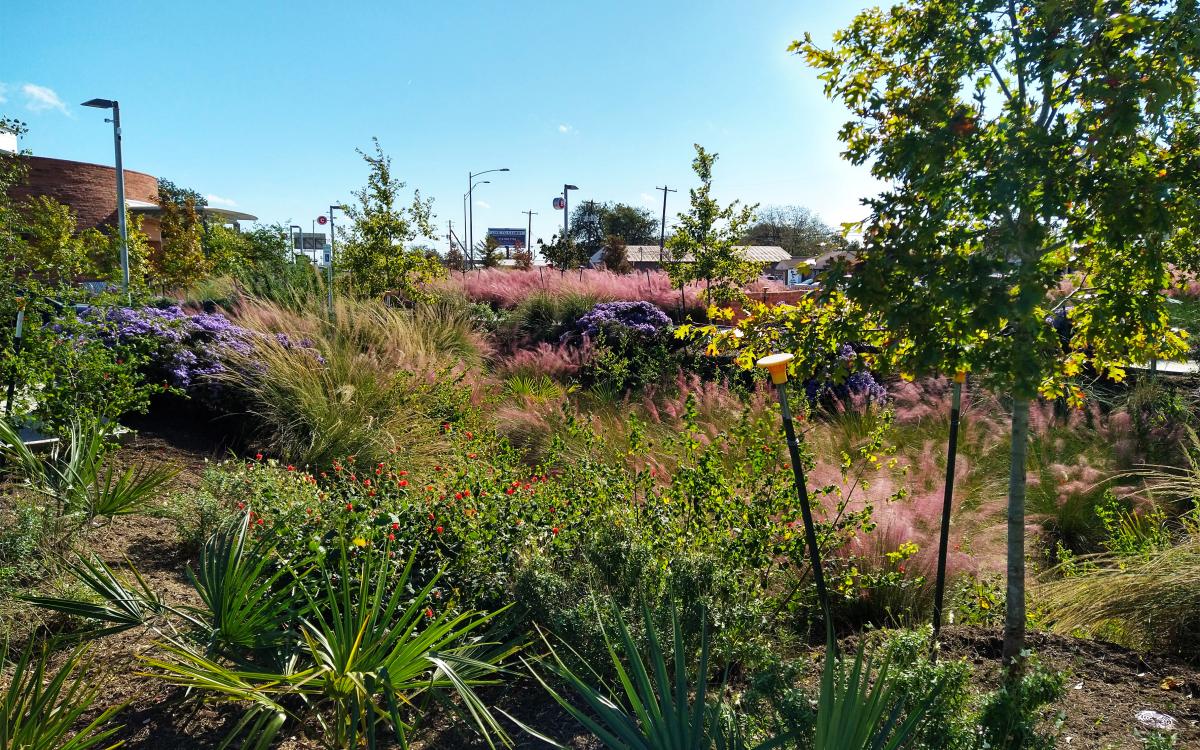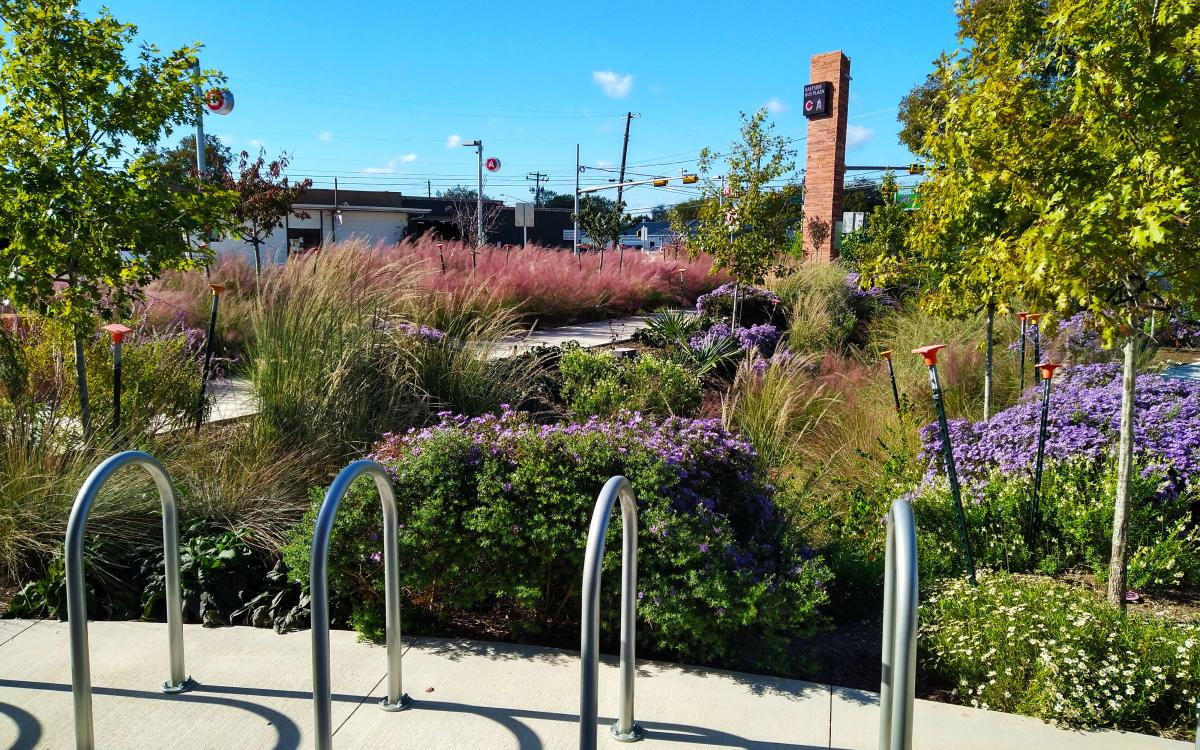Austin, TX
United States
Once a flat barren road median, the Richard Moya Eastside Bus Plaza – named for the first Mexican-American elected to public office in Austin – has been transformed. Now a vibrant, ecologically robust refuge for wildlife, the landscape echoes the historic Central Texas ecoregion of the Blackland Prairie, and offers renewed beauty and comfort to more than 600 riders each day.
Situated around a central circular passenger station, the site radiates out into a series of pedestrian and vehicular scale spaces. Travelers wait surrounded by densely layered plantings in a sunken courtyard on the east side of the station. A series of connected passive stormwater features throughout the site serve the dual purpose of detaining and moving water, while also acting as a buffer from the almost constant bus movement and noisy traffic.
It was important that this transit hub be comfortable and inviting to travelers, bring ecological uplift to the site, and be a valued addition to the neighborhood community. The project achieved SITES Silver certification, and the Austin Energy Green Building (AEGB) 3-Star Rating is in-progress. Educational signage scattered throughout the site and station features some of the project's sustainable processes and accomplishments. In addition to the passenger station amenities, the site includes a variety of seating and open spaces that promote intimate connection and offer spaces for gatherings. Future programming includes hosting a small farmers market and other community events.
In order to re-shape this 1.8-acre site through the focused lens of the sustainable design standards laid out by both SITES and AEGB, the design team collaborated closely and solicited feedback from users and stakeholders to create a dynamic, sustainable system. Highlights include:
- The capacity to retain all stormwater from a 100-year storm event through a series of functional and aesthetic passive stormwater management techniques including: planted rain gardens and swales, vegetated detention ponds, and permeable paving. These features also offer the ability to reduce landscape irrigation water consumption and mitigate potential downstream flooding issues.
- The project increases biodiversity and adds important natural habitat in the urban core through the planting of 265 caliper inches of trees and the addition of over 3,600 rooted plants. A predominantly native planting plan that emulates the historic Blackland Prairie ecoregion also promotes seasonal variety with varied bloom times to provide year round color and interest.
- A commitment to sustainable landscape maintenance practices and techniques that will change and update as the site evolves over time.
- Soil restoration of over 30% of the site area including:
- Removing existing compacted and degraded top soil
- The addition of locally sourced planting soil specified to meet the particular chemical characteristics of the native plant species to promote healthy and successful plant material
- Post construction tests for organic matter, infiltration, and soil biological function
This partnership between the major Austin-area transportation agencies and as a component of the Capital Area Rural Transportation System (CARTS), has ensured the Richard Moya Bus Plaza remains an effective connection to outlying rural communities connecting to central Austin.
"The opportunity to transform a long disused and barren piece of land into a natural and inviting setting through the magic of native sustainable plantings and innovative hydrology was a very satisfying part of this project for CARTS and a great addition to the Eastside Bus Plaza’s public value and utility." - Dave Marsh, General Manager CARTS
Photos courtesy of Patrick Wong and Studio Balcones.

